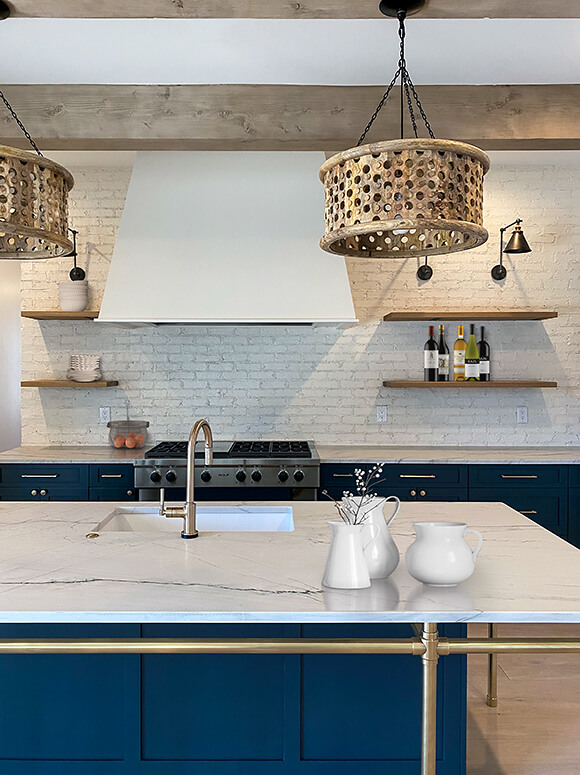Cutting-edge and Fashionable Designs in Modern Legs For Kitchen Island Solutions
Cutting-edge and Fashionable Designs in Modern Legs For Kitchen Island Solutions
Blog Article
Vital Elements to Think About When Selecting Legs For Kitchen Island
Choosing the appropriate legs for a cooking area island involves a cautious assessment of multiple elements that can dramatically influence both capability and aesthetic charm. As we explore these aspects, it becomes clear that each decision can have significant implications for the general cooking area experience.
Material Options
When choosing legs for a cooking area island, understanding the different product options is necessary for achieving both visual allure and architectural honesty (Legs For Kitchen Island). The selection of material dramatically influences not just the durability of the island yet additionally its total layout and capability
Steel legs, often made from stainless steel or wrought iron, contribute a commercial and modern-day feeling while making certain durability and security. These products are immune to use and can support considerable weight, making them optimal for larger islands.
Another option is engineered products, like MDF or plywood, which can be extra cost-efficient while still supplying a variety of surfaces. Nevertheless, they may not provide the very same degree of stability as solid timber or steel. Materials such as acrylic or glass can create a modern look, though they might need extra assistance to make sure stability.
Inevitably, the choice of material for cooking area island legs must align with the wanted performance and the overall motif of the kitchen area.
Design and Layout

When taking into consideration design, the form and coating of the legs are critical. Tapered legs can provide a sense of lightness and beauty, while thicker, much more robust legs can convey strength and stability. Additionally, the finish-- be it painted, stained, or all-natural-- need to enhance the kitchen cabinetry and kitchen counter products to produce a unified look.
Additionally, the style of the legs can also reflect individual preference. Personalized or attractive legs, such as those including elaborate carvings or unique geometric forms, can work as centerpieces, adding character and individuality to the cooking area. Eventually, the best choice will certainly not just improve functionality yet additionally raise the aesthetic allure, making the kitchen area island a standout function of the home.
Height Factors To Consider
Choosing the ideal height for cooking area island legs is essential, as it straight impacts both performance and convenience. The conventional elevation for a kitchen island usually ranges from 36 to 42 inches, straightening with common counter top elevations.

It is also important to make up individuals' heights and choices. Tailoring the height can ensure a comfy experience for all family participants, making the cooking area island a more enjoyable and useful area.
Weight Support
Making certain sufficient weight support for kitchen area island legs is vital for both safety and security and performance. The cooking area island typically serves several purposes, consisting of cooking, dining, and added storage, demanding a robust assistance structure. When choosing legs, it is crucial to think about the total weight capability called for based on the island's meant usage and the materials that will certainly be put on it.
The option of product for the legs plays a significant function in their weight-bearing capacities. Solid wood, steel, and heavy-duty composites normally provide exceptional toughness contrasted to lighter materials. Furthermore, the layout of the legs-- whether they are straight, tapered, or have a pedestal form-- can affect their capacity to distribute YOURURL.com weight efficiently throughout the framework.
Constantly seek advice from the supplier's specs regarding load limitations to make certain that the legs can maintain the desired weight without endangering security. In recap, selecting kitchen area island legs with appropriate weight assistance is crucial for creating a risk-free and useful culinary area.
Installation and Maintenance
Proper installment and upkeep of kitchen area island legs are vital for guaranteeing longevity and security. To start, it is vital to follow the manufacturer's standards throughout installation. This often entails protecting the legs to the island base making use of proper fasteners, ensuring that the legs are degree and aligned. Making use of a Legs For Kitchen Island degree tool can aid avoid wobbling and improve the overall visual charm of the cooking area island.
As soon as installed, routine upkeep is required to maintain the stability and look of the legs - Legs For Kitchen Island. For wooden legs, regular cleansing with a damp fabric and application of suitable wood gloss can prevent dampness damage and preserve their coating. Metal legs may call for a gentle cleaning remedy to remove grease and crud, followed by a dry fabric to stop rust formation
Additionally, examine the legs consistently for signs of wear or damage, such as cracks or loose joints. Tightening screws or bolts as needed can likewise extend the life expectancy of the legs. By sticking to these installment Related Site and upkeep techniques, home owners can ensure that their kitchen island remains sturdy and visually appealing for years to come.
Conclusion

Visual comprehensibility is critical in choosing the design and layout of legs for a kitchen island, as these elements considerably affect the total ambiance of the space. Tapered legs can offer a feeling of agility and sophistication, while thicker, extra durable legs can share strength and stability.Choosing the suitable height for kitchen area island legs is vital, as it straight influences both capability and convenience. In recap, picking cooking area island legs with ample weight assistance is essential for creating a functional and secure cooking room.
In verdict, picking legs for a cooking area island requires cautious consideration of different elements, including product alternatives, design, elevation, weight support, and installation.
Report this page